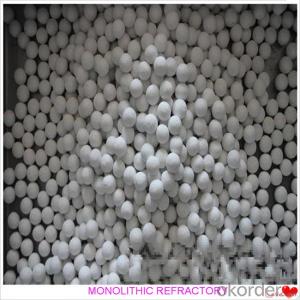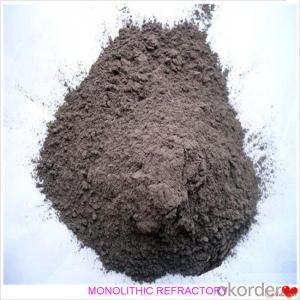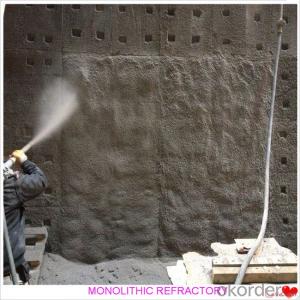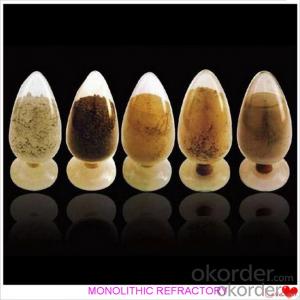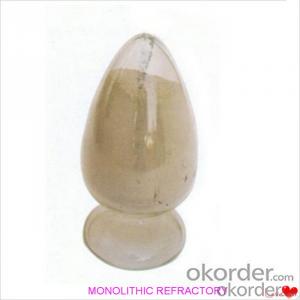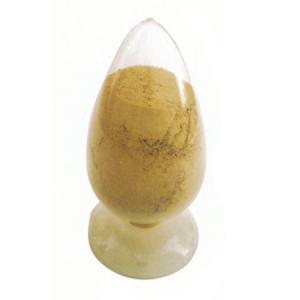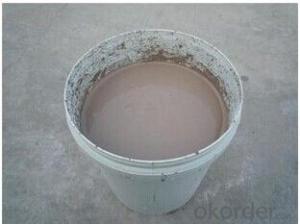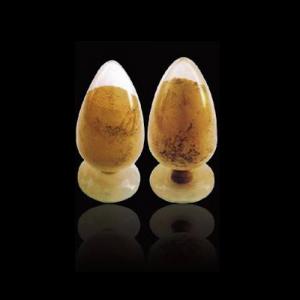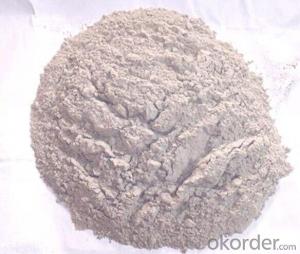Cheap Castable For Fireplace and Industrial Furnace in Iron and Steel
- Loading Port:
- China main port
- Payment Terms:
- TT OR LC
- Min Order Qty:
- 1000 kg
- Supply Capability:
- 3000000 kg/month
OKorder Service Pledge
OKorder Financial Service
You Might Also Like
Cheap Castable For Fireplace and Industrial Furnace in Iron and Steel
Product Description:
Cheap castable is manufactured according to international standards. The product is famous for its excellent abrasion resistance and low thermal conductivity. Further, these can be provided in different specifications as required by the clients. The Cheap castables are used high purity raw materials and additives as the main material, and made of under superfine powder adding technology.
Product Advantages:
The material has excellent structural stability and air tightness, and has high physical and chemical properties, also has a fine working ability.They should be used with the same material products.
Product Applications:
For feature of Cheap castable, they have excellent abrasion resistance, thermal shock resistance, high-temperature resistance, anti-corrode and have high intensity.
Designed for refractory lining of blast furnace iron and slag runners, skimmers and soon
They can be used in troughs of small and mid size BFs and in all positions of the troughs where fast tapping is required.
Product Specifications:
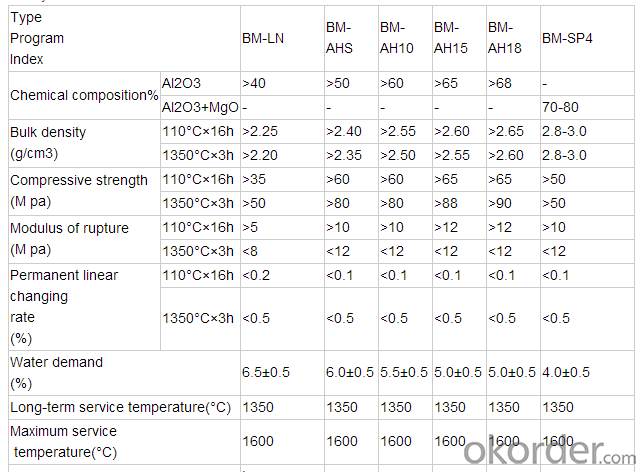
FAQ:
1. How you can control your quality?
For each production processing, we have complete QC system for the chemical composition
and Physical properties. After production, all the goods will be tested, and the quality certificate
will be shipped along with goods.
2. What's your delivery time?
It usually needs about 20days- 45 days after receiving the deposit.
3. Do you provide free samples?
Yes, we can provide a free sample for testing, If we have sample in stock,
The quantity based on the material type, The buyer should bear all the shipping costs.
4. What's your payment terms?
We can accept 30% deposit, 70% balance before shipment for ordrs over $ 2000.
5. Can we visit your Company?
Yes, certainly. You are very welcome to China and we will be honored to have a customer and friend.
Product Picture:
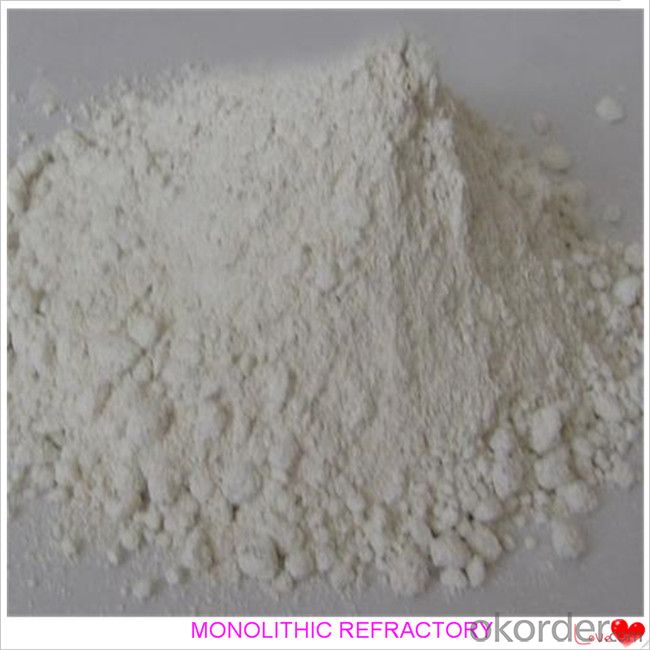
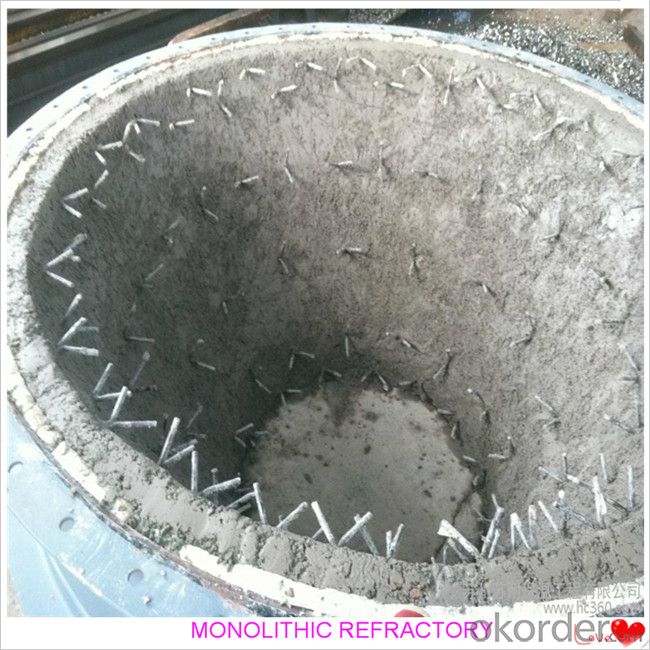
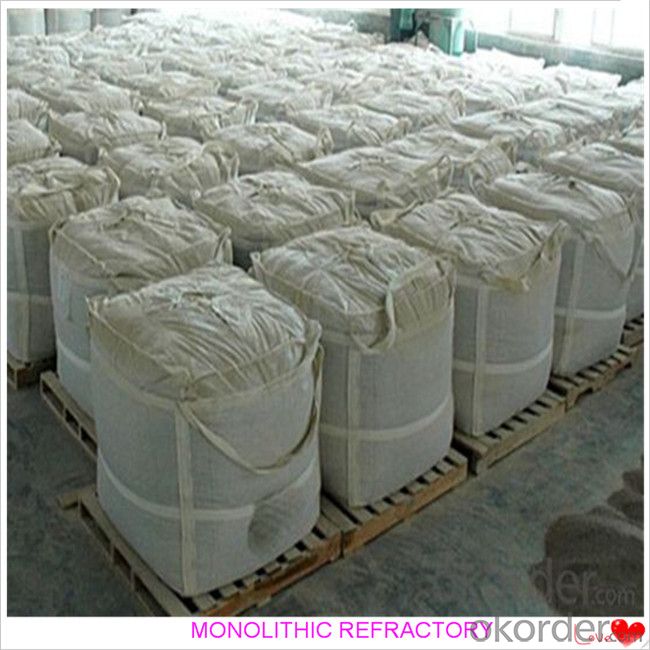
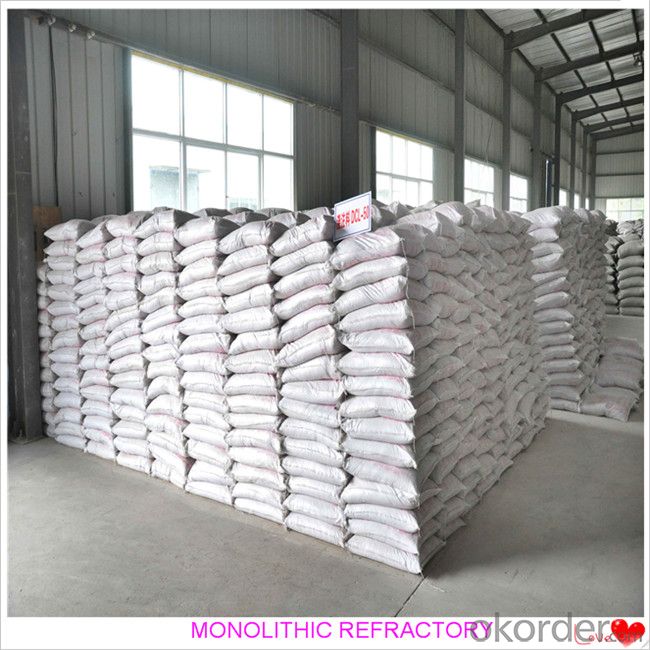
- Q:What are some common applications of monolithic refractories in the iron and steel industry?
- Some common applications of monolithic refractories in the iron and steel industry include lining of ladles, tundishes, and converters, as well as repairs and maintenance of furnaces, kilns, and other high-temperature equipment. They are also used for the construction of runners, troughs, and spouts in continuous casting processes.
- Q:How do monolithic refractories contribute to the reduction of downtime in iron and steel plants?
- Monolithic refractories play a crucial role in reducing downtime in iron and steel plants due to their unique properties and applications. These refractories are composed of a single, uniform material, making them highly versatile and easier to install compared to traditional brick refractories. Firstly, monolithic refractories offer excellent thermal insulation, which helps to prevent heat loss and maintain high temperatures in various areas of the plant. This insulation capability reduces the need for frequent repairs and replacements, as it minimizes thermal stress and prolongs the lifespan of equipment and furnaces. This, in turn, results in less downtime required for maintenance and repair work. Secondly, monolithic refractories exhibit superior resistance to thermal shock. The extreme temperatures experienced in iron and steel plants can cause rapid and significant temperature changes, leading to the cracking and failure of refractory linings. However, monolithic refractories have better thermal shock resistance, enabling them to withstand sudden temperature fluctuations without sustaining damage. This property enhances their durability and contributes to the reduction of downtime. Moreover, monolithic refractories offer enhanced mechanical strength and chemical resistance, making them suitable for the harsh operating conditions in iron and steel plants. These refractories can withstand the erosive effects of molten metal, slag, and other corrosive materials, ensuring the longevity of equipment and reducing the frequency of maintenance interventions. Additionally, the installation process of monolithic refractories is faster and more efficient compared to brick refractories. They can be easily applied using various techniques, such as shotcreting or gunning, allowing for quick repairs or renovations during planned shutdowns or even emergency situations. The reduced installation time results in shorter downtime periods, enabling the plant to resume operations promptly. In conclusion, monolithic refractories significantly contribute to the reduction of downtime in iron and steel plants through their excellent thermal insulation, resistance to thermal shock, mechanical strength, and chemical resistance. Their ease of installation and quick repair capabilities further enhance their role in minimizing downtime and ensuring uninterrupted production in these critical industries.
- Q:How do monolithic refractories perform in reheating furnace roof applications?
- Monolithic refractories prove highly effective when used on the roofs of reheating furnaces. These refractories are renowned for their outstanding ability to withstand extreme temperature conditions, making them an essential component in furnace operations. Their resistance to thermal shock ensures that they do not crack or spall, guaranteeing the long-lasting durability of the furnace roof. Moreover, monolithic refractories offer exceptional insulation properties, thereby helping to maintain the desired temperature inside the furnace. With their low thermal conductivity, they prevent heat loss and reduce energy consumption. This not only enhances the energy efficiency of the furnace but also leads to cost savings for operators. Furthermore, monolithic refractories provide excellent resistance against chemical attacks from gases and molten metals found within the furnace environment. Designed to withstand corrosive atmospheres, they effectively prevent the penetration of harmful substances, thereby extending the lifespan of the roof refractory. Additionally, monolithic refractories offer easy installation and repair options. Their ability to be cast or gunned in place allows for a seamless and precise application to the roof structure. This feature also facilitates quick and efficient repairs or maintenance, minimizing downtime and production losses. In summary, monolithic refractories are a reliable and efficient choice for reheating furnace roof applications. Their outstanding resistance to thermal shock, insulation properties, chemical resistance, and ease of installation make them the ideal solution for maintaining the structural integrity and performance of the furnace roof.
- Q:How do monolithic refractories resist chemical attack from molten metals and slags?
- Monolithic refractories are designed to resist chemical attack from molten metals and slags through a combination of factors. Firstly, monolithic refractories are typically made from high-quality materials that have excellent chemical resistance properties. These materials, such as alumina, magnesia, or silica, have a stable chemical structure that can withstand the corrosive nature of molten metals and slags. Secondly, monolithic refractories are often formulated with additives or binders that enhance their resistance to chemical attack. These additives can improve the refractory's ability to form a protective layer on its surface, which acts as a barrier between the refractory material and the corrosive molten metal or slag. Additionally, monolithic refractories are often designed with a dense microstructure that limits the penetration of molten metals and slags. The dense structure minimizes the pathways through which corrosive agents can reach the refractory material, reducing the risk of chemical attack. Moreover, monolithic refractories can be installed with proper joint design and anchoring systems to prevent the infiltration of corrosive substances. This ensures that the refractory lining remains intact and effectively resists chemical attack. Overall, the combination of high-quality materials, additives, dense microstructure, and proper installation techniques contribute to the ability of monolithic refractories to resist chemical attack from molten metals and slags, thereby extending their lifespan and maintaining the integrity of the refractory lining in high-temperature applications.
- Q:How do monolithic refractories improve the efficiency of ladle and tundish drying furnaces?
- Monolithic refractories improve the efficiency of ladle and tundish drying furnaces by providing excellent thermal insulation, high resistance to thermal shock, and superior strength. These properties ensure minimal heat loss during the drying process, allowing for faster and more efficient heating. Additionally, monolithic refractories offer better resistance to erosion and corrosion, prolonging the lifespan of the furnaces and reducing maintenance requirements. Overall, the use of monolithic refractories enhances the performance and productivity of ladle and tundish drying furnaces.
- Q:What are the limitations of monolithic refractories in high-temperature applications?
- Monolithic refractories have certain limitations when used in high-temperature applications. One major limitation is their susceptibility to thermal shock. Monolithic refractories lack the structural stability and resistance to sudden temperature changes compared to other refractory materials. Additionally, their relatively low thermal conductivity can lead to uneven heat distribution and potential hotspots, affecting the overall performance and longevity of the refractory lining. Another limitation is their susceptibility to chemical attack by certain aggressive environments, which can lead to accelerated deterioration and reduced lifespan. Overall, while monolithic refractories offer certain advantages in terms of installation flexibility and ease of maintenance, their limitations in terms of thermal shock resistance, thermal conductivity, and chemical resistance must be considered in high-temperature applications.
- Q:How do monolithic refractories contribute to the overall efficiency of ladle slagging operations?
- Monolithic refractories contribute to the overall efficiency of ladle slagging operations by providing excellent thermal insulation, high resistance to thermal shock, and superior corrosion resistance. These properties allow for better heat retention, reduced heat loss, and extended refractory lifespan. As a result, ladle slagging operations can be carried out at higher temperatures with minimal refractory wear and tear, leading to increased productivity and cost savings. Additionally, monolithic refractories offer ease of installation and maintenance, ensuring quick turnaround times and minimizing downtime during ladle slagging operations.
- Q:How do monolithic refractories improve energy efficiency in the iron and steel industry?
- Monolithic refractories improve energy efficiency in the iron and steel industry by providing better insulation and reducing heat loss. They have lower thermal conductivity compared to traditional refractory bricks, which means less heat is conducted through the lining of the furnaces or kilns. This leads to reduced energy consumption and improved thermal efficiency. Additionally, monolithic refractories offer better resistance to thermal shock, minimizing the need for frequent repairs or replacements, thereby saving energy and reducing downtime.
- Q:What are the specific requirements of monolithic refractories for ladle transfer applications?
- Monolithic refractories used in ladle transfer applications have specific requirements to ensure their effectiveness and durability. These requirements are essential for maintaining the integrity of the ladle lining and preventing any issues during the transfer process. Firstly, monolithic refractories for ladle transfer applications must have excellent thermal shock resistance. Ladles are subjected to extreme temperature changes during the transfer process, and the refractories must be able to withstand rapid heating and cooling without cracking or spalling. This property helps to prevent any damage to the lining and maintains the structural integrity of the ladle. Secondly, ladle transfer applications require monolithic refractories with high resistance to chemical attack. Ladles often come into contact with various molten metals and slag, which can have corrosive properties. The refractories must be able to withstand these corrosive environments and maintain their physical and chemical properties over time. Another important requirement is good mechanical strength. Ladles can experience significant mechanical stress during the transfer process, including impacts and vibrations. Therefore, the monolithic refractories need to have sufficient strength to resist these mechanical forces and prevent any cracking or failure in the lining. Furthermore, ladle transfer applications often involve the use of fluxes and additives, which can have different physical properties. The refractories used must have compatibility with these fluxes and additives to ensure proper performance and avoid any adverse reactions that could affect the ladle's lining. Lastly, monolithic refractories for ladle transfer applications should have low porosity. Low porosity helps to minimize the penetration of molten metal and slag into the refractory lining, reducing the risk of erosion and extending the service life of the refractories. In summary, the specific requirements of monolithic refractories for ladle transfer applications include excellent thermal shock resistance, high resistance to chemical attack, good mechanical strength, compatibility with fluxes and additives, and low porosity. By meeting these requirements, the refractories can effectively withstand the harsh conditions of ladle transfer and ensure the longevity and performance of the ladle lining.
- Q:How are monolithic refractories recycled or disposed of at the end of their lifespan?
- Monolithic refractories at the end of their lifespan are typically recycled or disposed of through various methods. Recycling involves collecting the used refractory materials and processing them to remove any contaminants. The processed refractories can then be used as raw materials in the production of new refractory products. Disposal methods include landfilling in designated areas or utilizing waste-to-energy facilities to convert the refractories into energy. The choice between recycling and disposal depends on factors such as the condition of the refractories and the availability of recycling facilities in the area.
1. Manufacturer Overview |
|
|---|---|
| Location | |
| Year Established | |
| Annual Output Value | |
| Main Markets | |
| Company Certifications | |
2. Manufacturer Certificates |
|
|---|---|
| a) Certification Name | |
| Range | |
| Reference | |
| Validity Period | |
3. Manufacturer Capability |
|
|---|---|
| a)Trade Capacity | |
| Nearest Port | |
| Export Percentage | |
| No.of Employees in Trade Department | |
| Language Spoken: | |
| b)Factory Information | |
| Factory Size: | |
| No. of Production Lines | |
| Contract Manufacturing | |
| Product Price Range | |
Send your message to us
Cheap Castable For Fireplace and Industrial Furnace in Iron and Steel
- Loading Port:
- China main port
- Payment Terms:
- TT OR LC
- Min Order Qty:
- 1000 kg
- Supply Capability:
- 3000000 kg/month
OKorder Service Pledge
OKorder Financial Service
Similar products
New products
Hot products
Related keywords
